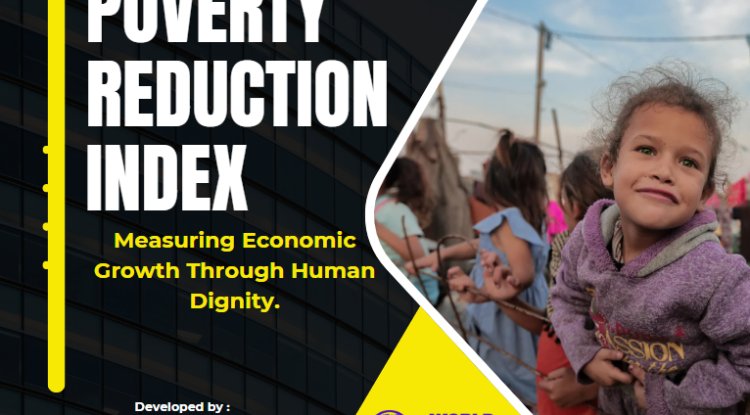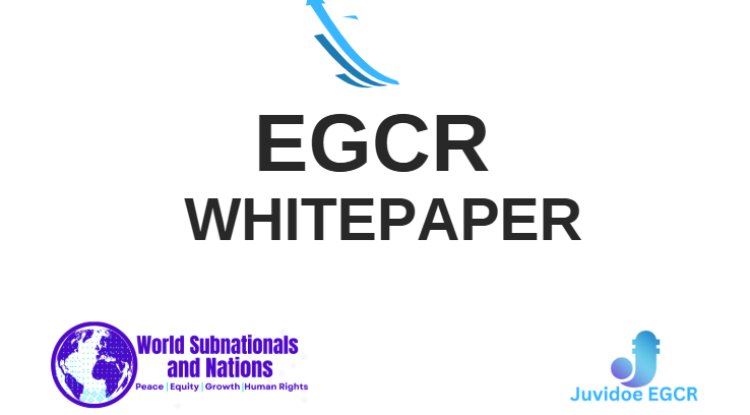WPC Statutes
The World Peace Court
Preamble
In the pursuit of global peace, security, justice, and the peaceful resolution of disputes among states, regions, subregions, and national and subnational territories, we, the founding members of The World Peace Court (WPC), recognizing the necessity of a permanent and impartial international court, reaffirming the principles of equality, justice, and respect for the sovereignty of all nations and subnational regions, committed to upholding the principles of peaceful coexistence, cooperation, and amicable conflict resolution without bloodshed,
Reaffirming the imperative of eradicating insurgencies, terrorism, total war, invasion, biotech war, proxy war, civil war, limited war, religious war, trade/economic wars, technology wars, geopolitical wars, capital wars, and all military wars,
Hereby establish The World Peace Court.
_________________________________________________________________________________________________________________
Article 1: Jurisdiction and Mandate
1.1. The World Peace Court (hereinafter referred to as "the Court") shall have jurisdiction over all disputes and conflicts arising among signatory states, territories, regions, and subnational entities that have agreed to the jurisdiction of the Court. The establishment of the Court signifies its authority to address disputes and conflicts that may arise among the parties bound by the Global Peace Agreement. Signatory states, regions, and subnational entities consented to the Court's jurisdiction recognize its role in facilitating peaceful conflict resolution.
1.2. The Court's mandate includes the adjudication of cases related to violations of the Global Peace Agreement, human rights abuses, territorial disputes, environmental issues, and any other matters submitted to it by the parties involved. The Court's mandate encompasses a broad range of issues essential to maintaining global peace and justice. It is empowered to consider cases involving breaches of the Global Peace Agreement, human rights violations, disputes over territories, and environmental concerns. Additionally, the Court is open to addressing any matter brought before it by the involved parties, ensuring a flexible and responsive approach to conflict resolution.
1.3. It is the responsibility of the Court to render advisory opinions on legal matters that have been presented to it by authorized international and subnational bodies, as well as by states and corporations. The role of the Court extends beyond simply settling disputes; it also acts as a source of legal information and provides advice services.
Authorized international and subnational bodies, states, and entities may seek the Court's guidance on legal questions and interpretations of international and subnational law. The provision of advisory opinions by the Court contributes to the clarity and consistency of legal principles, promoting a deeper understanding of the law and its applications.
1.4. Non-Signatory State Accession
Non-signatory states, regions, and subnational entities may seek the Court's jurisdiction by acceding to the Global Peace Agreement and formally accepting the Court's mandate. This provision acknowledges the potential for expanding the Court's jurisdiction to include new parties interested in peaceful conflict resolution and the principles of the Agreement.
1.5. Subject-Matter Jurisdiction
The Court shall exercise subject-matter jurisdiction over disputes that fall within the scope of international and subnational law, including those related to the objectives and principles of the Global Peace Agreement. This ensures that the Court's jurisdiction is clearly defined and aligned with the principles and objectives of the Agreement.
1.6. Mutual Consent
The Court's jurisdiction is based on the mutual consent of the disputing parties. To proceed with a lawsuit, the parties must readily recognize the Court's jurisdiction. This assures that the Court's engagement is based on the parties' assent, reflecting the Global Peace Agreement's voluntary and cooperative nature.
1.7. Compliance with Judgments
Signatory states, regions, and subnational entities commit to complying with the judgments and advisory opinions of the Court. This commitment underscores the importance of upholding the Court's decisions and maintaining the integrity of the peaceful conflict resolution process.
________________________________________________________________________________________________________________ Article 2: Composition and Structure
2.1. The Court shall be composed of a panel of judges elected by the General Assembly of the Global Peace Agreement. The judges shall be individuals of high moral character, integrity, and competence in international law. The composition of the Court is of paramount importance to its effectiveness and credibility. Judges are selected based on their impeccable moral character, unwavering integrity, and exceptional expertise in international law. This rigorous selection process ensures that the Court's bench is comprised of individuals with the highest qualifications to adjudicate disputes and uphold the principles of the Global Peace Agreement.
2.2. The Court shall be presided over by a President and Vice-President, elected by the judges for five years. The leadership of the Court is entrusted to a President and Vice-President, whom the judges themselves elect. This structure ensures that the Court's leadership is chosen by its members, promoting autonomy and independence. The President and Vice-President serve for a specified term, fostering continuity and stability in the Court's operations.
2.3. The Court may establish chambers for specific categories of cases, including human rights, environmental, and territorial disputes, as necessary. The Court's flexibility in establishing specialized chambers for specific categories of cases reflects its commitment to addressing diverse disputes effectively. Specialized chambers ensure that cases are adjudicated by judges with expertise in the relevant area, enhancing the quality of decisions and promoting an in-depth understanding of complex issues.
2.4. The Court shall have a Registry responsible for administrative and logistical support to the Court's operations. The Court's efficient and organized functioning is facilitated by a dedicated Registry responsible for administrative and logistical support. The Registry plays a crucial role in managing the Court's proceedings, maintaining records, and assisting in the practical aspects of the Court's work.
2.5. Judges' Independence
The Court shall protect the independence of its judges by ensuring that they are not subject to any pressures or influences from the outside that could affect their ability to remain impartial. The Supreme Court is committed to the principle of judicial independence as a means of preserving the validity of its rulings and promoting respect for the rule of law.
2.6. Transparency and Accountability
The Court shall operate with transparency and be subject to mechanisms for accountability. Transparency in the Court's proceedings and accountability measures ensure public confidence in its operations, promoting trust in its ability to deliver fair and just outcomes.
_________________________________________________________________________________________________________________Article 3: Legal Proceedings
3.1. Cases and Parties
3.1.1. Cases before the Court may be brought by signatory states, territories, regions, and subnational entities agreeing to the Court's jurisdiction and by individuals, international organizations, and non-governmental organizations with a recognized interest in the matter. The inclusivity of parties allowed to bring cases before the Court demonstrates its commitment to providing accessible avenues for dispute resolution. This provision ensures that states, regions, individuals, and relevant organizations can seek justice and resolution through the Court.
3.1.2. The Court shall have the authority to hear cases involving disputes between states, regions, territories, or subnational entities and violations of human rights and international law. The Court's jurisdiction extends to a broad spectrum of disputes, including those between states and regions, territories, and subnational entities. Furthermore, the Court is empowered to address cases related to human rights violations and breaches of international law, reinforcing its role in upholding justice and accountability.
3.1.3. Parties to a case before the Court shall have the right to appoint legal representatives and advocates to present their arguments and evidence. Recognizing the significance of effective representation, parties to a case are granted the right to appoint legal representatives and advocates who will present their arguments and evidence. This ensures parties have the necessary support to articulate their positions before the Court.
3.1.4. The Court shall have the authority to grant reparations, including compensation, restitution, and other remedies, to parties in cases where violations have been established. In cases where violations have been substantiated, the Court is empowered to grant reparations, including compensation, restitution, and other appropriate remedies. This provision underscores the Court's commitment to addressing the consequences of violations and achieving justice for affected parties.
3.2. Procedures and Hearings
3.2.1. The Court shall establish rules of procedure for its proceedings, ensuring transparency, fairness, and expeditious resolution of cases. To ensure its proceedings' orderly and fair conduct, the Court shall establish clear rules of procedure. These rules prioritize transparency, fairness, and the expeditious resolution of cases, promoting a just and efficient legal process.
3.2.2. Hearings before the Court shall be open to the public unless the Court determines that privacy or security concerns require closed sessions. The Court's commitment to transparency is reflected in its practice of holding hearings open to the public. However, the Court reserves the discretion to conduct closed sessions when privacy or security concerns necessitate confidentiality.
3.2.3. Parties to a case shall have the opportunity to present their arguments, witnesses, and evidence. The Court's procedures ensure that parties to a case have ample opportunities to present their arguments, witnesses, and evidence. This inclusive approach allows for a comprehensive examination of each case and promotes a fair and thorough consideration of all relevant factors.
3.2.4. The Court shall have the authority to issue subpoenas, require the production of documents, and take other steps to aid evidence presentation. The Court has the right to issue subpoenas, require the production of documents, and take any other steps necessary to facilitate the presenting of evidence, therefore improving its ability to conduct complete and impartial proceedings.
_________________________________________________________________________________________________________________
Article 4: Judgments and Advisory Opinions
4.1. The Court shall render judgments and advisory opinions based on the application of international law, including treaties, customary international law, and the principles of the Global Peace Agreement. The Court's core function is to render judgments and provide advisory opinions in accordance with established principles of international law. This includes the interpretation and application of treaties, customary international law, and the guiding principles of the Global Peace Agreement. By relying on these sources, the Court ensures the alignment of its decisions with established legal norms and the overarching objectives of peace and justice.
4.2. Judgments of the Court shall be final and binding on the parties to the case. The Court's judgments carry the weight of finality and binding authority. Once a judgment is rendered, it is legally binding on the parties to the case. This provides clarity and closure to the dispute at hand and enforces compliance with the Court's decisions.
4.3. Advisory opinions shall serve as non-binding legal guidance to the requesting party and the international community. In situations where parties or international entities seek legal guidance on specific matters, the Court may issue advisory opinions. These opinions, while valuable as legal interpretations, are non-binding. They provide informative guidance to the requesting party and the wider international community, providing insights into the legal aspects of the issue without imposing obligatory measures.
4.4. Enforcement of Judgments
The Court shall ensure the enforcement of its judgments, and signatory states and entities shall be obligated to implement the Court's decisions in good faith. To uphold the integrity of its judgments, the Court will take measures to ensure their enforcement. Signatory states and entities are bound by their commitment under the Global Peace Agreement to implement the Court's decisions in good faith, reinforcing the rule of law and accountability.
4.5. Compliance and Sanctions
Non-compliance with the Court's judgments may lead to the imposition of sanctions or other measures, as determined by the General Assembly of the Global Peace Agreement. The Court's judgments are not mere recommendations; they carry the force of law. Non-compliance with these judgments may trigger sanctions or other measures, as the General Assembly decides. This mechanism ensures the effectiveness and credibility of the Court's decisions.
_________________________________________________________________________________________________________________
Article 5: Enforcement and Compliance
5.1. Parties to a case shall be obligated to comply with the Court's judgments, and failure to do so shall constitute a violation of the Global Peace Accord. The core principle of the Court's enforcement mechanism is the obligation of parties to comply with its judgments. Failure to adhere to these judgments directly violates the Global Peace Accord. This provision underscores the importance of upholding the rule of law and respecting the Court's authority.
5.2. The Court may request the assistance of the Security Council of the Global Peace Accord to enforce its judgments, including through the imposition of economic sanctions or other measures. To ensure the effective enforcement of its judgments, the Court is empowered to seek the assistance of the Security Council. The Security Council may take various measures, including imposition of economic sanctions, to compel compliance with the Court's decisions. This cooperation between the Court and the Security Council enhances the Court's ability to uphold its judgments.
5.3. The Court shall have the authority to refer cases involving human rights abuses and other violations to relevant international bodies and tribunals for enforcement. In cases where human rights abuses and other violations of international law are at issue, the Court is granted the authority to refer these cases to the appropriate international bodies and tribunals for enforcement. This provision ensures that cases involving severe violations receive the attention and action required for justice and accountability.
5.4. Non-Compliance Measures
The Court may recommend specific non-compliance measures to the General Assembly, including diplomatic sanctions, trade restrictions, and other peaceful measures. In non-compliance with the Court's judgments, the Court may recommend non-compliance measures to the General Assembly. These measures can encompass a range of diplomatic, economic, and peaceful actions designed to encourage parties to fulfil their obligations under the Global Peace Agreement.
5.5. Accountability
The Court may also investigate and prosecute cases of non-compliance and violations of the Global Peace Agreement's enforcement provisions. The Court's authority extends to investigating and prosecuting cases related to non-compliance and violations of the enforcement provisions of the Global Peace Agreement. This ensures that parties who breach their obligations under the Agreement's enforcement mechanisms are held accountable.
_________________________________________________________________________________________________________________
Article 6: Relationship with Subnational Entities
6.1. Subnational entities that have agreed to the jurisdiction of the Court shall be treated as parties to the Global Peace Agreement and shall have the right to bring cases before the Court. The Court acknowledges the significance of subnational entities in the context of the Global Peace Agreement. Subnational entities that have voluntarily accepted the Court's jurisdiction are considered integral parties to the Agreement. They are entitled to bring cases before the Court, affirming their role in the pursuit of peaceful resolution and justice.
6.2. The Court shall have the authority to hear cases involving disputes and conflicts among subnational entities and between subnational entities and states, regions, and territories. The Court's authority extends to addressing disputes and conflicts involving subnational entities. This includes cases between subnational entities and conflicts that may arise between subnational entities and states, regions, or territories. By granting the Court jurisdiction in these matters, the Agreement promotes the peaceful resolution of disputes at various levels of governance.
6.3. Mediation and Arbitration
The Court shall encourage the use of mediation and arbitration to resolve conflicts among subnational entities. In the spirit of fostering peaceful coexistence, the Court encourages the use of mediation and arbitration as initial steps in resolving conflicts among subnational entities. These alternative dispute-resolution mechanisms allow for dialogue, compromise, and mutually agreed-upon solutions.
6.4. Recognition of Decisions
Decisions of the Court shall be recognized and enforced by all signatory states, regions, territories, and subnational entities. The Accord establishes that decisions rendered by the Court are binding on all signatory parties, including states, regions, territories, and subnational entities. Recognition and enforcement of the Court's decisions are vital to ensuring the effectiveness of its conflict resolution processes.
6.5. Human Rights and Subnational Entities
The Court shall also have jurisdiction over cases involving human rights abuses and violations by subnational entities, ensuring accountability and justice. The Court's authority extends to cases involving human rights abuses and violations committed by subnational entities. This provision underscores the Court's commitment to upholding human rights and ensuring accountability at all levels of governance.
________________________________________________________________________________________________________________
Article 7: Amendments and Review
7.1. Any signatory may propose amendments to this Court's Statute and require a two-thirds majority vote for adoption. Like any legal framework, the Court's Statute may need adjustments over time to address emerging needs and evolving circumstances. Signatories are empowered to propose amendments to the Court's Statute, underscoring the participatory nature of the Agreement. For an amendment to be adopted, it must secure a two-thirds majority vote within the General Assembly. This requirement ensures a broad consensus among the signatory states, regions, territories, and subnational entities before making any changes.
7.2. The Court's Statute shall be reviewed periodically to ensure its effectiveness and relevance in light of changing circumstances. Recognizing the dynamic nature of international relations and the potential for evolving challenges, the Court's Statute is subject to periodic review. These reviews aim to assess the Statute's effectiveness and relevance, considering changes in global circumstances. Reviews provide an opportunity to make necessary adjustments and improvements to the Court's operations and procedures. The periodic nature of these reviews ensures that the Court remains adaptable and responsive to the needs of the signatory parties.
7.3. Process of Amendment
The process of amending the Court's Statute involves several key steps:
7.3.1. Proposal: Any signatory may amend the Court's Statute, outlining the suggested changes and their rationale.
7.3.2. Consideration: Proposed amendments are submitted to the General Assembly for consideration. The General Assembly reviews the proposals, engaging in discussions and debates to evaluate the potential impact and implications of the proposed changes.
7.3.3. Voting: A formal vote is conducted within the General Assembly to decide on adopting the proposed amendment. The amendment must secure a two-thirds majority vote to be adopted.
7.3.4. Implementation: Once an amendment is adopted, it becomes an integral part of the Court's Statute, guiding its operations and functions accordingly.
7.4. Review Mechanism
The review mechanism of the Court's Statute is structured to ensure its effectiveness:
7.4.1. Regular Assessment: Periodic assessments of the Court's Statute are conducted to evaluate its operational effectiveness and its alignment with the objectives of the Agreement.
7.4.2. Stakeholder Engagement: The review process involves engagement with all signatory states, regions, territories, and subnational entities to gather their input and perspectives on the Court's performance.
7.4.3. Expert Consultation: Expert consultations may be sought to provide insights and recommendations regarding potential improvements and adjustments to the Statute.
7.4.4. Comprehensive Evaluation: The review process results in a comprehensive evaluation report that outlines any recommended changes to enhance the Court's efficiency and effectiveness.
_________________________________________________________________________________________________________________
Article 8: Termination and Withdrawal
8.1. Parties to the Global Peace Agreement may choose to terminate their acceptance of the Court's jurisdiction by providing written notice to the Court. The Global Peace Agreement recognizes the importance of preserving the voluntary nature of acceptance of the Court's jurisdiction. Any signatory party that decides to withdraw from the jurisdiction of the Court can do so by submitting written notice to the Court. This provision respects the sovereign choices of the parties involved and allows them to reconsider their involvement in the Court's proceedings.
8.2. Termination shall take effect one year from the date of notification, during which the Court's jurisdiction shall continue to apply. To ensure a structured and orderly transition, the Global Peace Agreement specifies that the termination of acceptance of the Court's jurisdiction does not have immediate effects. Instead, a one-year transition period commences from the date of notification. During this period, the Court's jurisdiction continues to apply to the withdrawing party. This allows for the resolution of any pending cases or matters involving the party in question. The transition period is designed to avoid abrupt disruptions and maintain the integrity of ongoing processes.
8.3. Review of Termination
The Global Peace Agreement includes a mechanism for reviewing the termination process:
8.3.1. Consultation: Parties considering termination are encouraged to consult with the Court to address concerns, resolve outstanding issues, or explore alternative solutions.
8.3.2. Possible Reconsideration: During the one-year transition period, the withdrawing party may reconsider its decision to terminate its acceptance of the Court's jurisdiction. Such reconsideration may lead to the withdrawal of the termination notice.
8.3.3. Completion of Ongoing Cases: The Court shall ensure the completion of ongoing cases involving the withdrawing party during the transition period, securing a fair and just resolution.
8.4. Consequences of Termination
Termination of acceptance of the Court's jurisdiction may have specific consequences:
8.4.1. Pending Cases: Any pending cases involving the withdrawing party at the time of termination shall be concluded according to the Court's procedures.
8.4.2. Continued Applicability: The Court's judgments and decisions related to cases involving the withdrawing party shall continue to apply and be recognized.
8.4.3. Possible Re-engagement: The withdrawing party may choose to re-engage with the Court and accept its jurisdiction again at any time in the future, demonstrating the flexibility and inclusivity of the Agreement.
In witness whereof, the undersigned, having been duly authorized, have affixed their signatures to this World Peace Court Statute with the shared aspiration of fostering peace, justice, and the rule of law among nations, territories, regions, and subnational entities.
Membership of World Subnationals and Nations is an automatic acceptance of this World Peace Court
All members/indegines/citizens/residents and the representatives of the subnational and national entities/territories, in full agreement with the principles and purposes of the WSandN Charter, hereby automatically adopt this World Peace Court Statutes, declare it legitimate and binding.
NOTE: Membership of the WSANDN is an automatic acceptance of this Agreement . However, signatures of representatives may be made available on hardcopies of this agreement
Initially done in the city of Sydney Australia, on this of 30th, November 2023














